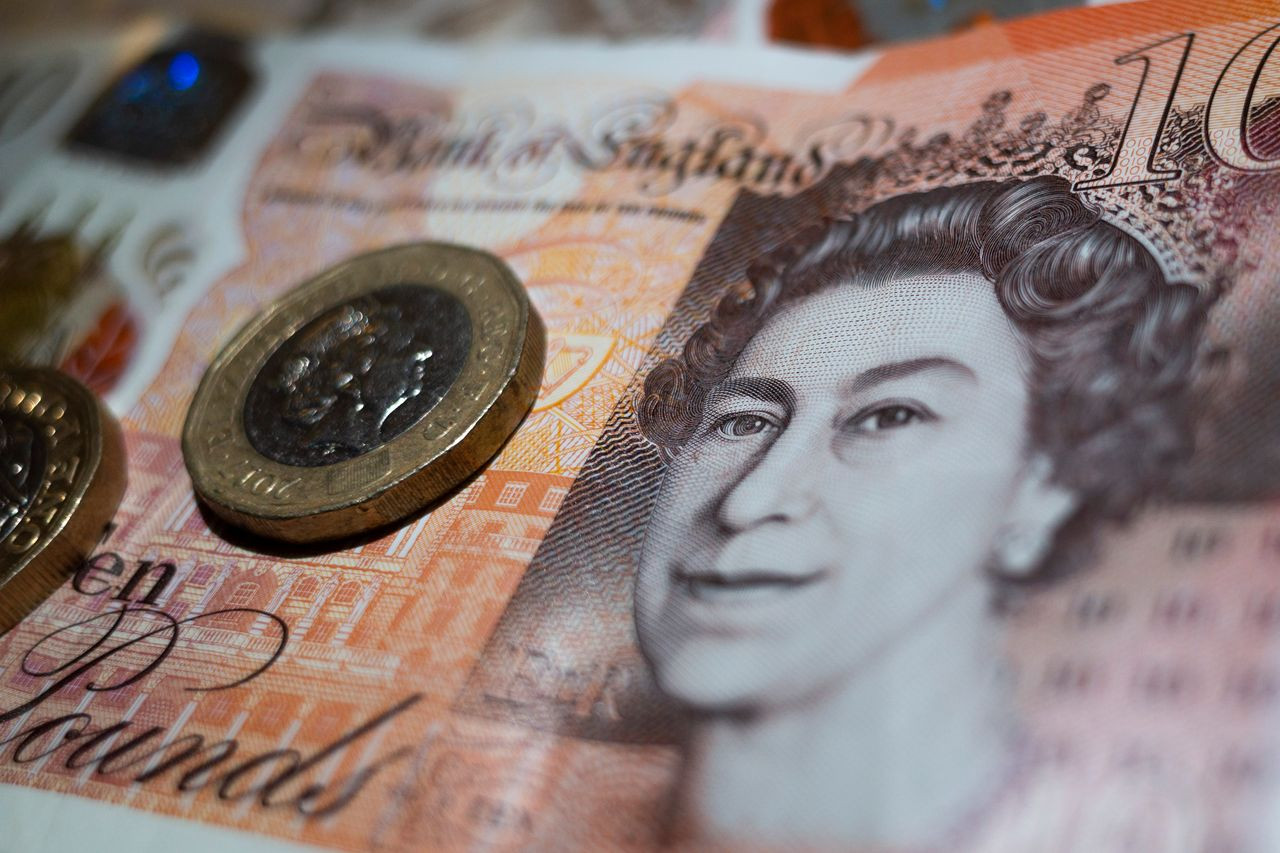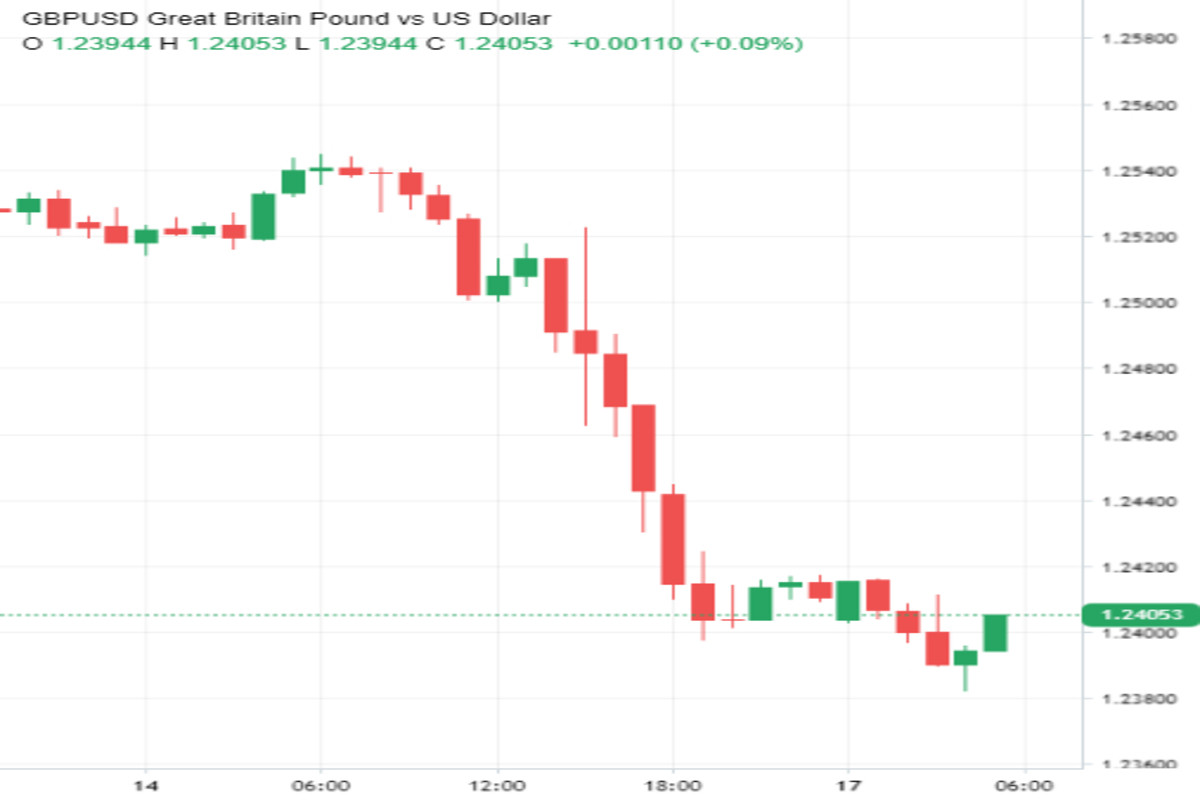
The British pound has crashed, despite initially showing promise. Last Friday, sterling soared against the dollar to a 10-month high before taking a nosedive. What contributed to such a rapid fall in GBP/USD? Does it have a chance to resume growth?
Retrospective of GBP Uptrend
Since the beginning of the year, the pound has shown the best performance among all G10 currencies. It strengthened against the US dollar by more than 3%.
The catalyst for the sterling was the hope for continued interest rate hikes in the UK and the end of monetary policy tightening in the US.
Traders now expect the UK interest rate range to increase by at least 0.50% this year, while in the US an increase of only 0.25% is expected.
Two factors contributed to the strengthening of hawkish market sentiment regarding the Bank of England's (BoE) future monetary policy: another inflation spike in the country (in February, the price growth accelerated to 10.4%) and improved prospects for the British economy.
In November last year, the BoE initiated the largest interest rate increase since 1989, generating gloomy forecasts for the UK economy. However, we now see that after 11 rounds of tightening, the situation in the country is not as bad as previously predicted.
HSBC analyst Dominic Banning said the recent macroeconomic data shows that the impact is not that strong, and the BoE no longer expects a decline in economic growth in the current quarter.
The expert is confident that the resilience of the British economy will allow the BoE to maintain a hawkish course. This should support the pound against the dollar, which is already on shaky ground due to the possible change in the Fed stance.
Most investors now believe that the May tightening round in the US will be the last in the current cycle. Last week, this dovish view was supported by weak US statistics.
The greenback came under pressure after the release of worse-than-expected inflation data. In March, the annualized price growth rate was only 5%, while in February, the figure jumped to 6%.
The US Producer Price Index (PPI) also took a downward trend last month. The indicator dropped to 2.7% from the previous level of 4.9%.
Obvious signs of disinflation in the US weakened hawkish market sentiment regarding the Fed's future monetary policy. Against this backdrop, the dollar fell to a new annual low of 100.78 by the end of last week.
The British pound benefited greatly from the sharp decline in the greenback. Early Friday, the GBP/USD pair jumped to a 10-month high of 1.2546.
Dollar recovers losses
However, the sterling's triumph was short-lived. The British currency closed Friday's session in the red zone, losing nearly 0.9% against the dollar. The pair fell to the level of 1.2398.

The US currency managed to resume growth amid the upbeat statistics. The key report on Friday was the publication of retail sales data in the US. Although the indicator fell significantly more than the forecast in March on a monthly basis, the first quarter of the year turned out to be quite strong in terms of consumer spending.
Preliminary data on the University of Michigan's Consumer Confidence Index for April also provided additional support for the dollar. The index rose to 63.5, which is higher than analysts' expectations and the previous reading.
Another driver for the greenback uptrend was the increase in inflation expectations for the year ahead (from 3.6% in March to 4.6% in April).
The hawkish rhetoric of US officials also contributed to the strengthening of the American currency. On Friday, April 14, Federal Reserve Board of Governors member Christopher Waller stated that, despite a year of aggressive rate hikes, the Fed has not made significant progress in returning inflation to the target level of 2%, indicating the need for further rate increases.
This hawkish position, along with positive statistics, made dollar bulls expect continuation of the counter-inflation measures in the US. The market once again resumed talks about the fact that interest rates may not have peaked in May, which put significant pressure on the GBP/USD pair.
If the Fed takes a pause instead of halting rate hikes next month and explains its position clearly, the pound will not be able to hold its current position, even despite the rate hike in the UK. Credit Agricole analysts forecast a pullback of the GBP/USD pair to the 1.23 level or lower by the end of the second quarter.
Pound is unlikely to maintain its bullishness
Rabobank's strategists also expect a further decline in the British currency. They forecast that the pound could fall to the 1.20 mark within the next six months.
According to Rabobank analyst Jane Foley, the outlook for Britain was 'horribly gloomy,' but now it has changed to 'simply gloomy.' Still, it is unlikely to provide significant support to the pound. The analyst added that the sterling may come under pressure from a less dovish-than-expected stance by the Fed and a growing risk of a global recession, which will reduce demand for risk assets.
As for the near-term prospects of GBP, most experts also anticipate downward dynamics. This week, the pound's decline may significantly speed up after the release of the UK inflation data for March.
Economists expect a decrease in the annualized rate of price growth from 10.4% to 9.8%. If inflation in the UK ceases to be double-digit, it may significantly weaken the market's hawkish expectations regarding the future trajectory of rate hikes in the country.
Currently, most market participants expect the Bank of England raising rates by 25 basis points at its next meeting in May. However, some traders still hope to see a sharper increase (by 50 basis points).
A sharp slowdown in inflation may finally eliminate the likelihood of a more hawkish scenario, further shaking the pound's position.
From a technical standpoint, the GBP/USD pair also looks very weak right now. The 20- and 50-period exponential moving averages, which are on the verge of a bearish crossover at the 1.2410 level, and the Relative Strength Index (RSI), which has dropped into the bearish 20.00-40.00 range, all this points to further declines in the pair.
If the cable falls below the April 14th low in the area of 1.2400, it will lead to a decline to the April 10th low of 1.2345, followed by the March 30th low at the 1.2294 mark.
On the other hand, a recovery of the major pair above the April 13th high of 1.2537 could lead it to a new 10-month high at the 1.2597 level. Breaking the latter will open a fast path to the May 27th high of 1.2667.





















